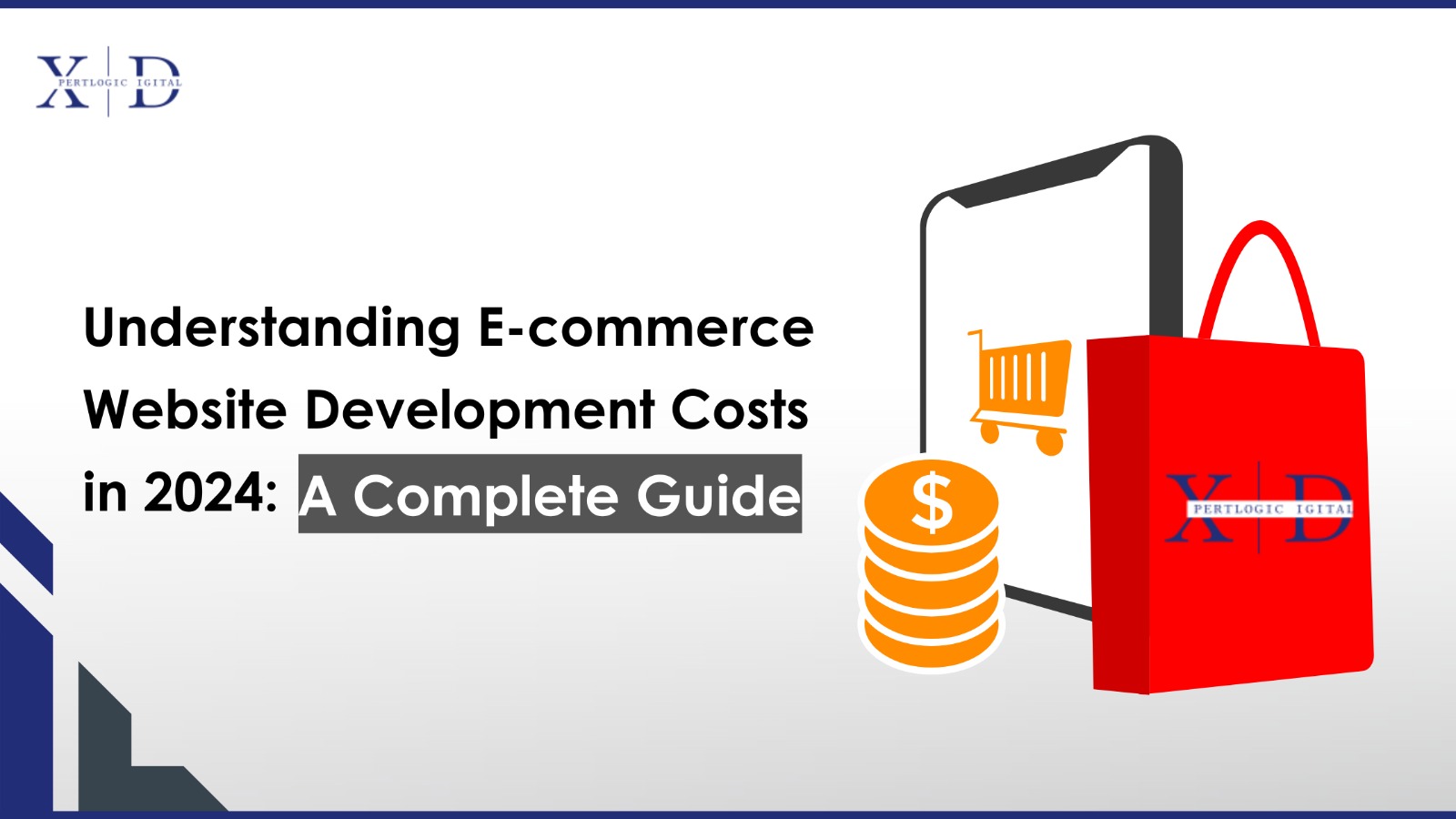
Building an e-commerce website is a powerful step toward reaching customers, expanding your brand, and increasing sales. However, before you dive into creating an online store, it’s essential to understand the costs involved in eCommerce website development. From platform selection to design and maintenance, the factors influencing development costs can vary widely. This guide will break down each cost component to help you budget effectively for your e-commerce site.
1. Key Factors Influencing eCommerce Website Development Costs
Several factors impact the cost of e-commerce website development. Here are the primary aspects to consider:
- Platform Choice: The e-commerce platform you choose will significantly influence the overall cost. Platforms like Shopify, WooCommerce, and Magento vary in features, scalability, and pricing.
- Design and Customization: A custom-designed website will cost more than a template-based site. Custom design involves unique features, tailored layouts, and brand-specific visuals, all of which can add to the expense.
- Functionality and Features: The complexity and number of features, such as product filters, payment gateways, and customer accounts, will affect the development cost.
- Security Measures: Since eCommerce sites handle sensitive data, security features like SSL certificates, data encryption, and secure payment gateways are essential and add to the cost.
- Maintenance and Updates: E-commerce sites require regular maintenance, updates, and possibly new features over time, which should be factored into your budget.
2. Platform Costs
The e-commerce platform you choose is a foundational decision that impacts your website’s cost, functionality, and scalability. Here’s an overview of popular platforms and their pricing structures:
- Shopify: Known for its ease of use, Shopify offers plans starting from around $39 per month. Advanced plans for larger businesses range from $399 and up, offering features like abandoned cart recovery and detailed reporting.
- WooCommerce: WooCommerce is a free plugin for WordPress, but additional costs arise from hosting, security, and premium plugins, which can total between $50 and $300 monthly, depending on the hosting provider and plugins.
- Magento: Magento is a robust platform, ideal for large-scale businesses. The open-source version is free but requires a strong technical setup and maintenance. Magento Commerce, the paid version, starts at approximately $22,000 per year.
- BigCommerce: Plans range from $29.95 to $299.95 per month, with additional transaction fees. BigCommerce is suitable for growing e-commerce businesses with built-in SEO and multi-channel selling.
Platform Consideration Tip: While Shopify and WooCommerce are budget-friendly for smaller stores, Magento is ideal for enterprises needing advanced features and scalability.
3. Design and User Experience Costs
The design of your e-commerce website is crucial in capturing customer interest and enhancing the shopping experience. Here’s how design choices impact costs:
- Template vs. Custom Design:
- Template-based Design: Platforms like Shopify and WooCommerce offer templates that cost between $0 and $200. This is a cost-effective choice if you’re starting with a minimal budget.
- Custom Design: A custom design offers a unique look tailored to your brand but can cost between $2,000 and $10,000, depending on complexity.
- Responsive Design: Ensuring your website is mobile-friendly is essential. Integrating responsive design costs between $500 and $2,000 but is often worth it to enhance mobile shopping.
- UX/UI Enhancements: User experience features such as navigation, loading speed, and intuitive interfaces add value but can add $1,000 to $5,000, depending on the level of customization required.
Design Tip: If you’re aiming for a distinctive brand look and enhanced user experience, investing in custom design is worthwhile. For a simple startup, templates can reduce upfront costs.
4. Core E-commerce Features and Functionalities
The cost of adding essential e-commerce features varies based on complexity and the platform. Common features include:
- Product Pages: Adding product descriptions, images, categories, and filters costs between $500 and $3,000.
- Shopping Cart and Checkout: A basic cart is often included in platforms like Shopify, while a custom, multi-step checkout process can add $500 to $2,500.
- Payment Gateway Integration: Payment gateways like PayPal and Stripe charge transaction fees, but integrating custom gateways or multiple options can cost $200 to $1,000.
- User Accounts and Profiles: Allowing customers to create profiles for saved information adds $500 to $2,000, depending on the features included.
- Product Search and Filtering: Adding search and advanced filtering capabilities improves user experience and costs $500 to $2,000 based on complexity.
Feature Tip: While additional features enhance the user experience, prioritize core functionalities first and expand as your business grows.
5. Security and Compliance Costs
Security is essential for e-commerce sites due to sensitive customer information and payment details. Here’s a breakdown of security-related costs:
- SSL Certificate: An SSL certificate is essential for secure connections and costs between $10 and $200 annually, depending on the provider.
- PCI Compliance: Ensuring compliance with the Payment Card Industry Data Security Standard (PCI DSS) costs between $500 and $2,000, depending on the security measures needed.
- Fraud Prevention Tools: Security measures such as two-factor authentication and fraud detection add another $100 to $500 annually.
- Data Backup Solutions: Data backup costs around $10 to $50 per month, depending on the storage and frequency.
Security Tip: Investing in robust security not only protects customers but also enhances trust and minimizes potential revenue loss from security breaches.
6. Content Management System (CMS) Integration Costs
A CMS enables you to manage product listings, blogs, and other website content easily. While some platforms have built-in CMS capabilities, integrating custom CMS features may add costs.
- Custom CMS Development: Developing a custom CMS can cost between $2,000 and $5,000, depending on complexity.
- Platform CMS Fees: Shopify and WooCommerce include basic CMS capabilities in their plans, while custom CMS solutions may require plugins, adding $50 to $500.
CMS Tip: For businesses planning frequent updates, a CMS is essential for efficient management. Choose a platform with an intuitive CMS to save time and costs in the long run.
7. Hosting and Domain Costs
Hosting and domain costs vary based on the platform and hosting provider.
- Domain Name: A domain name costs between $10 and $50 annually.
- Hosting: While Shopify includes hosting in its subscription, platforms like WooCommerce require external hosting, costing $5 to $30 monthly for basic plans and $50 to $100+ for premium plans.
- CDN (Content Delivery Network): CDNs like Cloudflare can improve loading times globally and cost between $0 (for basic plans) and $200 per month.
Hosting Tip: Choose a hosting plan that matches your site traffic. For startups, basic hosting suffices, while high-traffic sites may require premium hosting solutions.
8. Maintenance and Ongoing Costs
An e-commerce website requires regular maintenance to ensure optimal performance, security, and user experience. Consider the following ongoing costs:
- Platform Fees: Monthly subscription fees (for Shopify, BigCommerce, etc.) or hosting fees (for WooCommerce) range from $20 to $500, depending on the platform and plan.
- Plugin and Extension Updates: Many e-commerce sites use plugins, which require updates for functionality and security, costing $5 to $50 monthly.
- Security Maintenance: Regular security audits and updates may cost between $100 and $500 annually, ensuring the site is safe from vulnerabilities.
- Technical Support: Hiring technical support or a maintenance team costs between $50 and $200 per hour, depending on the expertise required.
Maintenance Tip: Factor in these ongoing expenses to keep your e-commerce website secure and high-performing. Regular maintenance prevents costly issues down the line.
9. Total Estimated Cost of eCommerce Website Development
Based on the factors mentioned, here’s an estimated range for building an e-commerce website:
- Basic E-commerce Site: $1,500 – $5,000
- Mid-Range E-commerce Site: $5,000 – $15,000
- High-End E-commerce Site: $15,000 – $50,000+
Note: Costs can vary depending on business needs, location, and developer expertise. Starting with essential features and scaling up as needed is often the most cost-effective strategy.
Conclusion: Budgeting for eCommerce Website Development
Building a successful e-commerce website requires thoughtful planning and budgeting. Understanding the cost factors — from platform and design to security and maintenance — will help you make informed decisions and create a website that supports your business growth. Whether you’re a startup with a limited budget or an established business looking for advanced features, aligning your investment with your business goals is essential.
For tailored eCommerce solutions that meet your budget and business needs, contact Xpert Logic today. Our team can guide you in creating a high-performing, secure, and scalable online store that maximizes your ROI.
Call to Action:
Ready to build your eCommerce website? Contact us at info@xpertlogic.com to discuss your project and get a customized quote.


